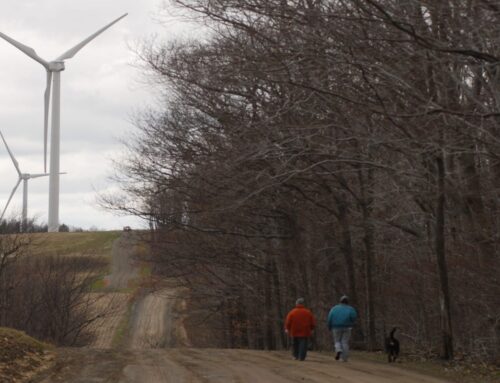Is It Time to Unlock the Great Lakes’ Wind Power Potential?
May 7, 2025
“Wind turbines in the Great Lakes have the potential to produce huge amounts of clean energy in one of the most populated regions in North America,” states a recent article by the Canadian Broadcasting Company. But it remains highly uncertain if that dream could become a reality anytime soon. Offshore wind energy development is facing major headwinds in the United States and Canada thanks to a mix of public and political opposition. Wind energy proponents argue that this has to change for the sake of energy security and climate concerns.
Canada has historically had a very favorable policy atmosphere for wind energy. As of 2022, the nation was a top-ten producer of wind energy on a global scale. For this reason, it came as a bit of a shock when Ontario, the nation’s most populous province, declared a moratorium on offshore wind in 2011 – a moratorium which still stands. At the time, Energy Minister Brad Duguid reasoned that “Fresh water wind turbines are something that’s relatively new, and the Ministry of the Environment needs a level of comfort on the science before they can approve any further consideration of them.”
But the Canadian Broadcasting Company contends that the primary reason for the moratorium was public distrust and anti-wind sentiment from local communities, a growing issue in renewables expansion across North America. “Anti-wind opposition has only grown in the last decade, and you can see that very clearly in the trend line of the paper,” Leah Stokes, associate professor of environmental politics at the University of California, Santa Barbara, told CNN in 2023. Stokes conducted a study that found that only about one in ten wind projects in Canada and the United States faced opposition in the early 2000s. “By the end of this period, before the Trump era, the average rate is more like one in five,” she said.
Opposition is also growing sharply in political spheres, with the United States’ President Trump leading an anti-wind movement, calling for “a policy where no windmills are being built” and making outlandish and false claims to slander the sector, including the noise from wind turbines causes cancer. The Trump administration is currently being sued by 17 states and Washington, D.C., for halting wind power projects. And, ironically, Trump’s energy policy might end up giving wind energy a boost – in Canada, that is.
Although Ontario’s moratorium on offshore wind is still in place, “the Ontario Clean Air Alliance thinks it’s time to reconsider,” says the Canadian Broadcasting Company, “arguing offshore wind could end the province’s reliance on natural gas imports from the U.S. for its gas-powered generators at a time when the U.S. threatens Canada with punishing tariffs and talk of annexation.”
“Given that we’re in a sovereignty crisis and affordability crisis and a climate crisis,” said Jack Gibbons, the chair of the Ontario Clean Air Alliance, “this is a solution that can address all three of those crises and we should just be moving forward as quickly as possible.”
A 2023 report by the United States’ National Renewable Energy Laboratory (NREL) found that the Great Lakes could house 150 GW of fixed and 415 GW of floating turbines. Furthermore, Gibbons says that wind power in the Great Lakes could provide more than 100% of Ontario’s total electricity needs, and at a cost lower than that of the four nuclear plants that the province is currently building. However, the cost of offshore wind production remains a challenge for the sector.
The cost of deploying wind energy has dropped dramatically on land as technologies have advanced, becoming “one of the lowest-priced energy sources available today” according to the United States Department of Energy. However, offshore wind is another story, especially in North America. Faced by enormous regulatory delays, supply chain issues, and high interest rates, offshore wind faces considerable financial hurdles – but building in the Great Lakes could actually be easier than building in the oceans, where waves, salt, and costly ocean leases create problems for permitting, construction, and maintenance.
By Charles Kennedy for Oilprice.com
More Top Reads From Oilprice.com
- The Market Is Well Supplied – So Why Is Saudi Arabia Raising Oil Prices?
- Weak Chinese Imports Sink Asia’s Coal Prices to Four-Year Low
- World Bank: Get Ready for a Commodity Price Freefall
Search
RECENT PRESS RELEASES
Related Post




